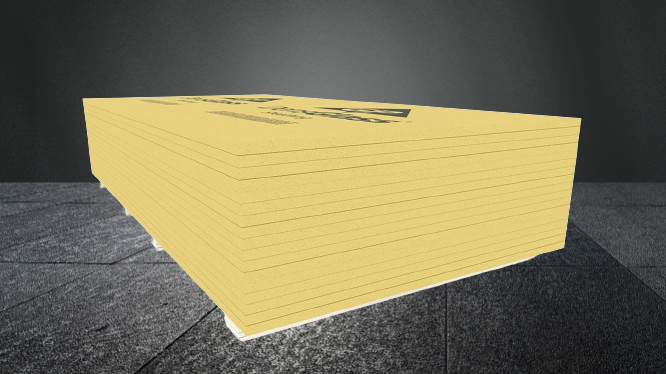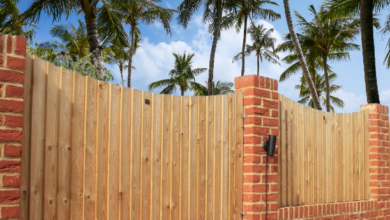DensGlass Alternatives

Sheathing is often used in construction projects for multiple purposes. It offers protection as well as a base for materials.
Among the many sheathing products available on the market, DensGlass is easily the best. It is well known that this fiberglass mat gypsum sheathing is resistant to mold and moisture and is long-lasting.
DensGlass sheathing guarantees that your building is sufficiently shielded from the weather by forming an amazing air and water barrier. It works with a variety of materials and is fire-resistant.
Despite its many advantages, DensGlass sheathing may have certain disadvantages. For example, most do-it-yourselfers find it difficult to install DensGlass sheathing.
Siding fasteners are not held in place either. You should look into some of the DensGlass alternatives to see if you can come up with a better solution because of these problems, among many others.
We’ll outline some of the best DensGlass substitutes in this post, along with some of their strongest points.
The Finest Substitutes for DensGlass
- Plywood
Many believed that DensGlass would eliminate plywood sheathing from the building industry when it was first introduced. Years later, though, plywood sheathing remains a common substitute for DensGlass.
Plywood is categorized as sheathing made of wood. It belongs to the same class as waferboard and OSB. Using a hot press, multiple wood sheets are cross-laminated to create plywood sheathing.
Plywood sheathing is a favorite material among builders and homeowners because it dries quickly and provides reasonable moisture resistance. This characteristic makes plywood sheathing somewhat resistant to condensation and the growth of mold.
The fact that plywood sheathing doesn’t swell is an additional benefit. It is therefore a fairly dependable sheathing product.
Plywood is composed of wood, while DensGlass is composed of glass fibers joined together with acrylic glue.
Plywood is a more breathable material because of the holes in between. Plywood is lighter and easier to work with despite the material difference. DensGlass weighs a lot more.
Comparatively speaking, DensGlass and Plywood are both superior. Plywood is a common substitute for DensGlass, but in terms of cost, water and fire resistance, and durability, DensGlass still wins out.
- Gypsum
Gypsum sheathing is the other DensGlass substitute. Another common material used in construction is gypsum. Gypsum sheathing comes with fire and water resistance. As a result, it resembles DensGlass fiberglass mat gypsum quite a bit.
Its adaptability is another similarity that makes it a good substitute for gypsum. Sheathing made of gypsum can be used as an underlayment for wood, metal, veneer, shingles, siding, and stucco.
Water-repellent paper is often layered on both sides of a gypsum sheathing product. As everyone knows, soaking gypsum in water causes it to crumble.
In addition, the thickness of the gypsum strengthens the building’s overall structure. Because it will be safer, make sure to choose gypsum sheathing that is asbestos-free.
Gypsum is safe to touch, unlike DensGlass, which contains fiberglass that can irritate your skin when being installed.
DensGlass is an excellent substitute for gypsum sheathing because of their many similarities. Both DensGlass and gypsum sheathing are reasonably priced, waterproof, and simple to install.
But in terms of durability, gypsum sheathing is greatly outperformed by DensGlass. This is something to consider when looking for a DensGlass substitute that works well. Additionally, be aware that gypsum boards are susceptible to impact damage.
- Fiber Cement Sheathing, CemPlate
Plywood sheathing and DensGlass are well-known products. Fiber cement sheathing is a very effective way to protect a building from fire and weather, even though it isn’t as common. Additionally, fiber cement sheathing provides soundproofing, something that most other sheathing materials do not.
Fiber cement sheathing from CemPlate can be used as sheathing on timber, modular, or steel frames. Fiber cement sheathing not only shields you from the elements but also improves the overall stability of the building.
It’s one of the market’s most resilient sheathing products because it contains fiber and cement. Even in extremely cold weather, it functions effectively. Fiber cement sheathing is far more environmentally friendly and stable than DensGlass.
You should think about fiber cement sheathing as a DensGlass substitute for a few reasons. It is fire, water, and moisture resistant as well as UV resistant.
It is dirt-proof and incredibly simple to cut. Fiber cement sheathing is devoid of any hazardous substances or gases, in contrast to DensGlass, which incorporates fiberglass.
It has no smell and a high impact resistance. This sheathing can also be used to encourage insulation. But you’ll need more than one board.
Try the CemPlate; it’s a hidden gem among sheathing products that you won’t regret using. CemPlate can be used for both interior and exterior walls before we move on to another sheathing material.
- Thermo-Brace
If the aforementioned DensGlass substitutes don’t seem perfect, you might want to look into Barricade’s Thermo-Brace. This is not the sheathing you know.
The long, premium fibers used in its construction have been treated to withstand moisture and water barriers. These two options are great choices if you’re looking for an alternative to DensGlass that will keep moisture out of your house.
Thermo-Brace sheathing provides insulation in addition to shielding your home’s interior. It is an easy-to-handle and install high-performance sheathing.
You can find it easier to know where to hammer them by looking for nail patterns on the surface.
The fact that this DensGlass substitute is available in lengths up to 12 feet is something I find appealing. If you are working in large areas, that can help expedite the installation process.
Reflective foil facings that block UV rays are available for ongoing construction projects. Though it may not be as common as DensGlass, thermo-brace sheathing is still something to think about.
- OSB Sheathing
The OSB sheathing is the final DensGlass substitute on our list. For years, this material has been used as a sheathing. And all of that is a result of its numerous qualities.
OSB sheathing is composed of rectangular wood layers that are oriented crosswise. There are many similarities between OSB and plywood. This is due to the fact that they are all composed of wood.
For the following reasons, OSB sheathing is a perfect substitute for DensGlass. It’s stronger, to start with. Strong winds can be tolerated by OSB sheathing. It is manufactured in large mats that are fairly simple to install.
The only issue with OSB is that it swells in excessively moist environments. In this regard, DensGlass performs better than OSB.
Future problems can be very serious as a result of swelling. Especially since sheathing is a difficult component to replace. Before utilizing OSB on a property that receives a lot of rainfall, you should give it some thought.
Which DensGlass Substitute Is Best?
The best substitute for DensGlass will rely on your needs for sheathing and your existing circumstances. Although they have different qualities, all of the aforementioned choices are good substitutes for DensGlass.
I strongly suggest fiber cement sheathing and gypsum if you’re looking for the best option.
It’s important to note that certain alternatives, like fiber cement, aren’t as accessible as OSB and plywood. It might take some time for them to be delivered after you place your order.
How Can I Choose The Finest DensGlass Substitute?
The fact that DensGlass sheathing is difficult to work with is one of its main shortcomings. The exact opposite is the option you ought to think about.
In other words, it ought to be simple to use. However, you shouldn’t ignore characteristics like fire, moisture, and water resistance.
Insulation and durability are other important factors. It will be beneficial if you can obtain sheathing that will help soundproof your house.

